By Nicola Frasson and Loredana Sottile
First rule of the game: "Everything is for sale. It's just a matter of price." It's not surprising, therefore, that in a delicate period like this, the wine world is in particular turmoil. Declining consumption, export collapse, and rising costs are certainly excellent reasons to put oneself on the market.
On the other hand, the rule of the buyer holds: "Business is done when you buy, not when you sell." Managing to negotiate a good price, leveraging precisely the uncertainty of the future mentioned above, is the mantra of those who have liquidity and long-term goals on their side.
When these two things come together, the game is on. At present, in the great Risk game of Italian wineries, several pieces are in motion: it's just a matter of time and signatures. Gambero Rosso has tried to anticipate the moves of the game.
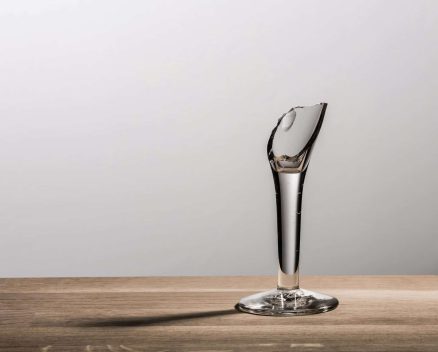
Tommasi's expansion in Friuli with Felluga
Let's start from the northern part of our viticultural lineup, where, reworking an old adage, we could say that it thunders, it thunders but the rain still doesn't want to come. Rumors date back to the end of 2023, but in recent weeks, they have become increasingly insistent: Tommasi, the large company from Valpolicella, is nearing the conclusion of the Felluga affair. It's not yet official, and it won't be a true acquisition but rather a partnership between the Tommasi family and Ilaria Felluga.
The Verona-based company expanded its activities in 1997 with the acquisition of 240 hectares of Poggio al Tufo in Tuscany, and, as had happened with important Piedmontese companies years earlier, it seemed that development should stop in Grosseto. However, starting from 2012, the company's development underwent a sudden acceleration, first with the purchase of Masseria Surani, about a hundred hectares in Manduria, to which another 90 in Oltrepò Pavese di Caseo were added, and quickly the Casisano estate in Montalcino. In 2016, it was the turn of Paternoster in Basilicata, while in recent years Tommasi has also landed in Orvieto with an area of 50 hectares and on Mount Etna, where the property covers 15. In between, there was an important collaboration with Tenuta La Massa in Panzano in Chianti Classico and with Nicolis in San Pietro in Cariano in Valpolicella, where the company entered as a partner and not as an owner. This latter formula will be proposed again with the Felluga company.
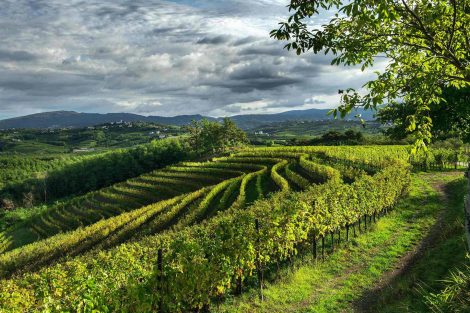
Marco Felluga, le vigne
Ilaria Felluga, at the helm of the company founded by her grandfather Marco in 1956, would bring with her Russiz Superiore, a reality with a strong viticultural platform extending over 50 hectares in Collio, and Marco Felluga, a brand that instead mainly relies on collaboration with local suppliers. Technical management and direction would remain firmly in the hands of the Felluga family.
With this latest operation, the Pedemonte house, led today by Pierangelo Tommasi and with cousin Giancarlo in technical direction, would strengthen its position as a leader in national oenology, reaching to control directly or through partnerships a vineyard that now extends to nearly 900 hectares scattered in many of Italy's most important denominations, with a production that until yesterday was mainly focused on red wines but with this development would enrich the portfolio with an important selection of high-end white wines to be mainly added to Lugana.
Trabucchi to Dal Forno and Ca’ Bianca to Begali
Staying in the Northeast, it's not just the large groups changing hands. There are also smaller but highly valuable companies being affected by this phenomenon, which once again underlines the great transformation that Italian viticultural entrepreneurship is experiencing. In February, Luca and Michele Dal Forno, who exited the family business founded by their father Romano in 2020, acquired the Trabucchi d'Illasi property, a splendid estate covering 25 hectares in the eastern area of Valpolicella dedicated almost exclusively to the production of the historic Veronese reds.
Instead, just a few days ago came the news that the small but prestigious Begali winery has acquired the entire property of Ca’ Bianca on the hill of Castelrotto from the Cesari family. This operation, following the sale of the company to the Caviro group in 2014, effectively marks Cesari's departure from the world of Amarone.
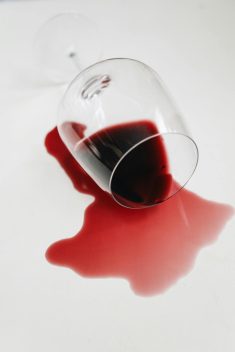
Signorvino towards the acquisition of Villa Bucci
Let's move to the Marche, where the movements concern one of the most distinctive companies of the Castelli di Jesi: Villa Bucci, which is expected to be acquired by the Oniverse group of Venetian entrepreneur Sandro Veronesi, universally known through multiple brands linked to the world of clothing (among them Calzedonia, Tezenis, Intimissimi, Falconeri) but also active in the wine segment through the chain of wine shops and wine bars Signorvino.
Remember that Villa Bucci for many enthusiasts is the highest peak when it comes to Verdicchio. The flattering judgment is the result of over forty vintages with a qualitative constancy aimed upwards and the undoubted skill of Ampelio Bucci in creating, in competition with the Trentino winemaker Giorgio Grai, a peculiar, hardly imitable style, lateral when not openly refractory compared to the course of trends. Grai's death in 2019 reignited the question: what will be the fate of the company? The curiosity rests on the fact that Ampelio, born in 1936, despite the verve with which he still promotes and talks about his company today, has not found a figure within the family who can replace him. Thus, over the past few years, a blanket of chatter has been created, often based on personal speculations, about an inevitable change of ownership. The usual "well-informed," consistently refuted, have repeatedly predicted the arrival of wealthy buyers: among foreign magnates, national entrepreneurs very active in the marketing of agri-food products, and even a great name in Piedmontese oenology desiring to add a white jewel to his personal collection of great reds, they have heard - literally - all sorts of things. This time, however, the news seems to have a solid foundation.
The transfer to Oniverse, the result of a long negotiation that was successfully concluded in early 2024, will probably be formalized at the next Vinitaly. Veronesi's group's expansion is demonstrated by the latest operations: over the past year, the acquisitions of La Giuva, the winery founded by the well-known football coach Alberto Malesani north of Verona, of Tenimenti Leone in the Castelli Romani district, and several hectares of vineyards in the surroundings of Alghero for the group.
Renzo Rosso's sights set on Montalcino
Different region, different operation. It's impossible not to talk about Montalcino, where interest remains extremely high and vineyard prices have reached dizzying figures (up to 900,000 euros per hectare). In a recent interview with Gambero Rosso (to be published in the April issue), Diesel's owner Renzo Rosso said that his next investment could be in the land of Brunello. After Etna and Langhe, Montalcino would indeed be the perfect move to complete the trio.
From a brief territorial reconstruction, it appears that the Pinino estate on the Montosoli hill in the northern area of Montalcino is currently on the market. Apparently, Genagricola, which has been handling its distribution since last year, may not be interested in purchasing it, despite the insurance group being in an expansion phase through the Leone Alato holding; the latest operation involves the annexation of Vigneti Fassone in Piedmont, while last year in Tuscany, it acquired the biodynamic winery Duemani, in the province of Pisa.
Regarding Pinino, however, apart from distribution, no offers have been made by Genagricola itself. In recent months, there was talk of some interest - which then faded - from the Frescobaldi group, but there's still little concrete. Except for the price, which should be around 12 million euros negotiable. After all, the math is simple: the hectares are ten, considered at the maximum of their value on the market.
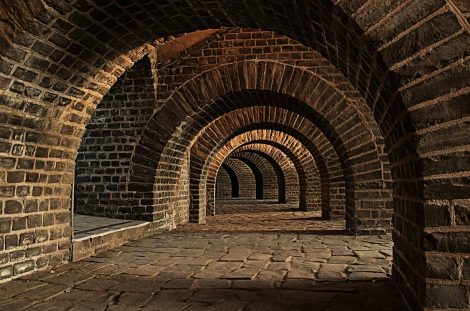
From Argiano to Castello di Neive
Reverse course for Brazilian entrepreneur André Esteves who, from Montalcino, could head straight to Piedmont. Just over ten years after his successful arrival in Tuscany, the owner of Argiano (a property that this year saw its 2018 Brunello crowned the best wine in the world by Wine Spectator) would like to expand beyond the region. In Piedmont, the choice could fall on Castello di Neive, owned since the 1960s by the Stuoino family. The lack of heirs would be the reason that has led the current owner to put it on the market. And some are ready to bet that the handshake is now close at hand.
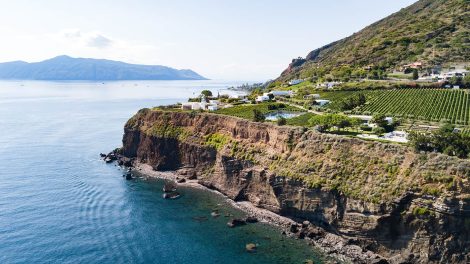
Tenuta Capofaro in Salina
One million euros for Tenuta Capofaro
Finally, eyes are on Sicily, where the restructuring of the Tasca D'Almerita company, after the death of Count Lucio, involves the sale of Tenuta Capofaro in Salina, which represents a bit of a black hole in the Tasca universe. Purchased about twenty years ago, the estate, located in the municipality of Malfa, includes approximately 6.5 hectares of vineyards. A true exception for the Aeolian island, where all the wine properties are divided into small parcels. Asking price: one million euros. Not exactly a sum within everyone's reach.
However, it is said on the island that a possible buyer from Tuscany has already come forward to place their first flag in Sicily. All indications point to the Antinori group. It remains to be seen whether whoever embarks on the deal will also be ready to acquire the attached resort: 27 sea-view rooms, with a restaurant and attached lighthouse (after renovation, it is leased to the Tasca family). To have it, however, you need to put another 7 million euros on the table.

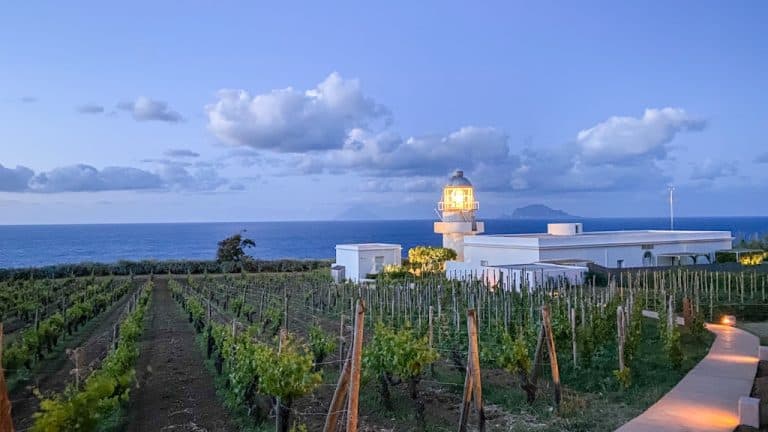
 Meloni: "Tariffs? If necessary, there will be consequences. Heavy impact on agri-food sector"
Meloni: "Tariffs? If necessary, there will be consequences. Heavy impact on agri-food sector" The Government honours the greats of Italian cuisine, from Bottura to Pepe. Massari: "Thank you, Meloni, the only one who listened to us"
The Government honours the greats of Italian cuisine, from Bottura to Pepe. Massari: "Thank you, Meloni, the only one who listened to us" "We must promote a cuisine that is not just for the few." Interview with Massimo Bottura
"We must promote a cuisine that is not just for the few." Interview with Massimo Bottura Wine was a drink of the people as early as the Early Bronze Age. A study disproves the ancient elitism of Bacchus’ nectar
Wine was a drink of the people as early as the Early Bronze Age. A study disproves the ancient elitism of Bacchus’ nectar "From 2nd April, US tariffs between 10% and 25% on wine as well." The announcement from the Wine Trade Alliance
"From 2nd April, US tariffs between 10% and 25% on wine as well." The announcement from the Wine Trade Alliance






